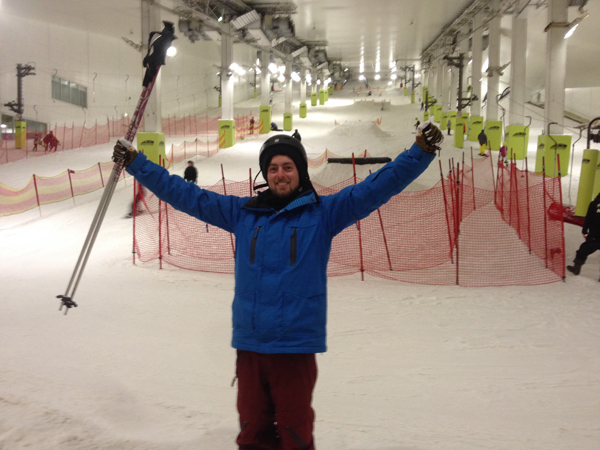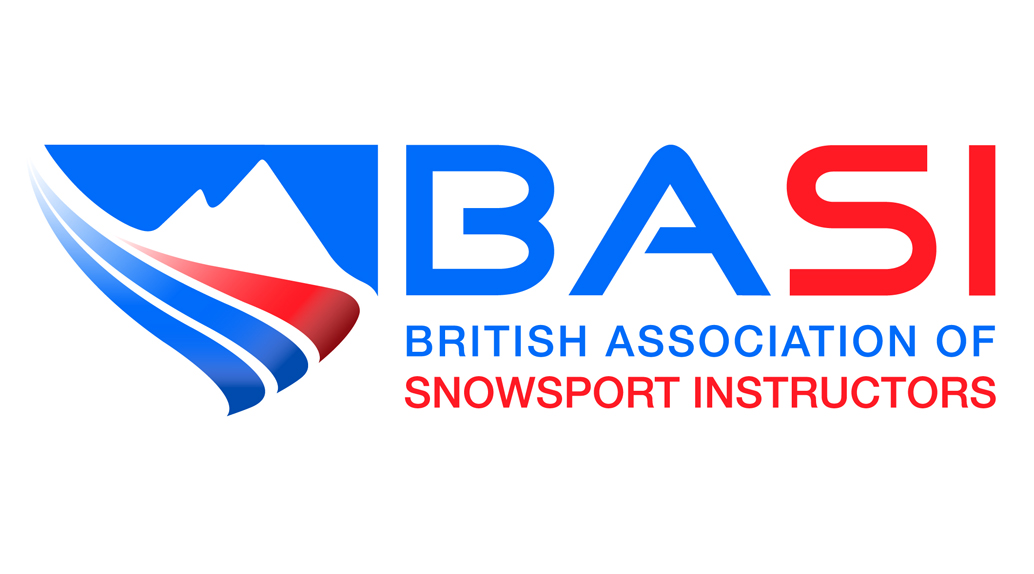The British Association of Snowsport Instructors (BASI) have a qualification structure for skiers who aspire to work, as a ski instructor, in the ski industry. The Alpine Level 1 course would be the first step to enter into this type of career, and is aimed at experienced skiers who feel they are at a level where they can start to teach beginners of the sport.
Before You Start The Course
Your skiing level is the most important thing to work on before starting the course. I would recommend talking to someone you know who has passed the BASI Level 1 course, and getting them to have a look at your skiing and tell you if you are at the required level. If you don’t know anyone, book a private lesson at any of the dry ski slopes or snow domes in the UK (and make sure your instructor has at least the BASI Level 1 qualification).
You don’t need to own your own skis yet as it’s possible to hire a pair (this was the case at Milton Keynes SnoZone – it would be best to check with the slope before arriving). However, I would highly recommend buying your own boots. There is a huge difference between a hired pair and your own – your own boots can be heat moulded to the shape of your foot, and custom-made foot beds can be added, to give excellent performance and comfort.
Day One
Our group (nine of us) met our instructor in the cafe next to the ski slope at 9 am. The skiing kicked off immediately with some rider improvement exercises, which covered body positioning over the skis, different types of turns (short rotational turns and longer carved turns), and how to use the feet to push on the skis and improve turning.
After lunch, we were briefly shown the Central Theme, which is the name given to the steps BASI instructors use to teach new skiers from beginner level, up to turning using parallel turns. There are seven steps, which were explained to us, told why they were useful to the student, and shown how to demonstrate them. We also practised the demonstrations ourselves, which in my opinion also helped my own skiing.
For the last hour we continued with more rider improvement exercises, in which we focused on torso positioning in short radius turns – in which the torso must be facing downhill while our legs turn beneath us; and larger carved turns – in which we looked again at pushing down with our feet while turning.
The skiing finished at around 4:30 pm, at which time we went into a small classroom to discuss the day’s activities. We were then set a task of planning a very short lesson (around 15 minutes) to teach the next day, and given some questions to answer at home regarding class safety.
Day Two
We met again at 9 am in the classroom, where we talked through the homework questions given to us the day before, which took no more than half an hour. Straight afterwards, we went onto the slope, and each of us gave a 15 minute practice lesson to the rest of the group – the one we had planned the day before. My lesson was looking at turn sizes and how they affect speed: smaller turns make skiing slower whilst larger turns make skiing quicker.
We had some rider improvement, similar to day one, which was related to our short radius turns. For myself, the main aspects I was trying to improve were my posture and my upper body position. After going through a few drills, we each had a run of short radius turns filmed by our instructor. After lunch we watched the videos of our short radius turns, and the instructor slowed them down to give us detailed and personalised feedback.
The Central Theme was briefly run through again, with a few new possible tactics shown to us which could be used in lessons.
The rest of the day on the slope was used to practice the larger carved turns. The main parts of our turns worked on were keeping the skis the same width apart throughout the turns, and managing pressure with our legs during the turns. Again, we had some large carved turns filmed by the instructor, and the day was finished with some video analysis.
Day Three
Day three was much the same as day two: rider improvement, including video analysis, took up most of the day; running through the Central Theme aspects was also a major part of the day.
Near the end of the day we went into the classroom to plan the lessons that we were to give during day four. These lessons form the teaching portion of the assessment for our Level 1 Ski Instructor exam.

Day Four
This day was the teaching assessment day, in which we each “taught” our peers in a 20 to 30 minute session. We were given some time the day before to plan our lessons, which were to be any part of the Central Theme. I chose to teach snow-ploughing, which is the first step in learning speed control.
Most of us were quite nervous on this day as it’s quite daunting knowing you will be pretending to teach advanced skiers the basics. Even though I have been teaching snowboarding for a few months, I was still not looking forward to it. However everyone’s lesson went well enough to pass. When assessing the teaching sessions, the main criteria were that we understood the Central Theme; had an effective way in which we got the information across to the students; managed our students in a safe and efficient way; gave relevant feedback; and moved on to further exercises relevant to the feedback.
Day Five
The final day of the course! For myself this was the most important day, as it was the assessment for our skiing ability. At this point I was still ironing out some aspects of my short radius turns, however by the end of the day they were at the required level to pass – what a relief!
Other aspects of the the skiing ability we were assessed on were the longer radius, carved turns, and our demonstrations of beginner turns (for when teaching the Central Theme).
This day was the shortest of the week, and we finished at around 2 pm, once we had been given our results (all of us passed!). We went back into the classroom, where our instructor gave us a de-brief of the week. This included running through with us what we needed to do next for our BASI Level 1, possible future courses and training we could enrol on, and general information regarding life as a ski instructor.
After The Course
Once the course has been completed, there are a few other small things that are needed from BASI before you receive your Level 1 certificate:
35 hours of snowsport experience: this can include shadowing ski lessons, working in the ski hire area, or even on reception at a ski school.
First Aid Certificate: Must be a minimum of a 12 hour course
Working with Children module: an online course
Criminal Record Disclosure: available online
Jack ‘Jesus’ Thompson

